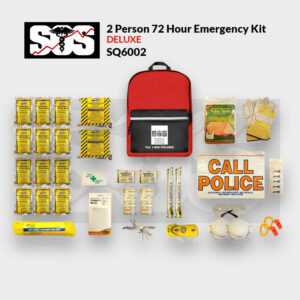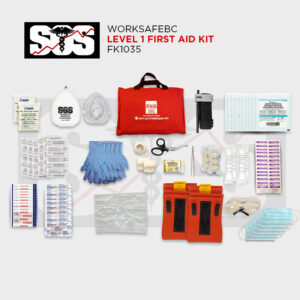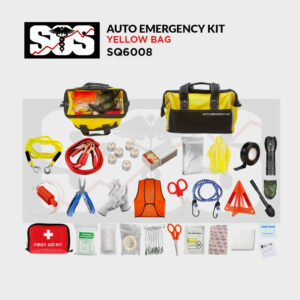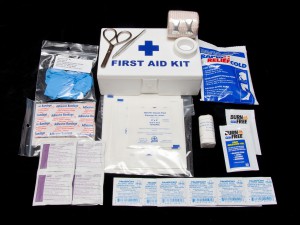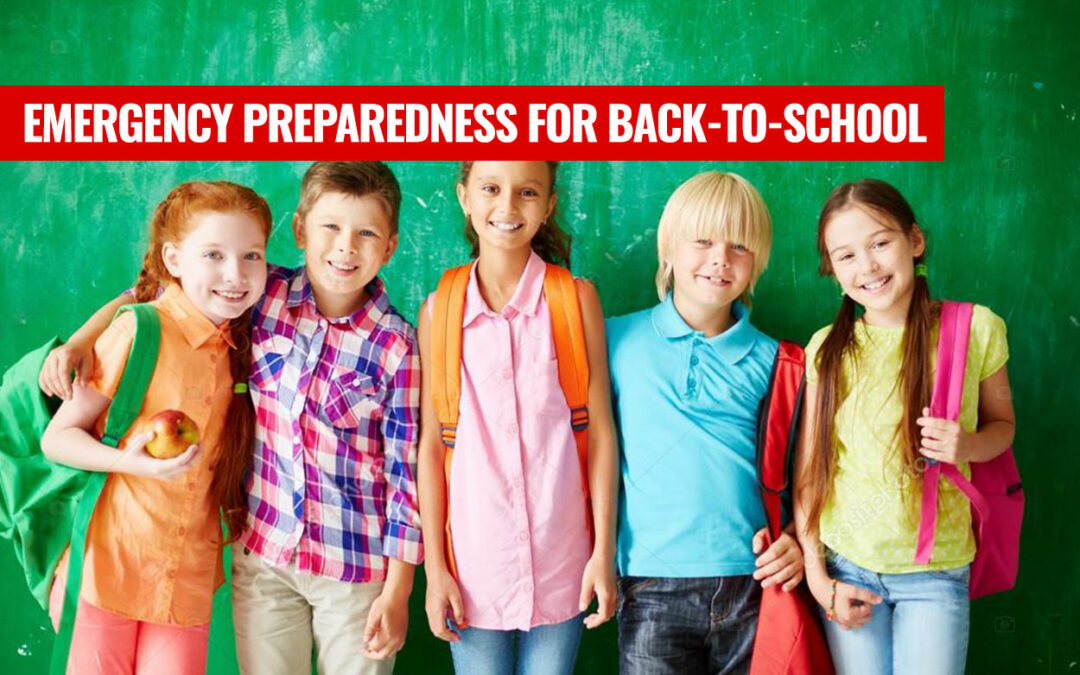
Emergency Preparedness for Schools 2023-2024
Emergency Preparedness for Back-to-School
September is around the corner, and as we all get ready to embark on a new school year, now is a great time to think about emergency preparedness for schools. Whether it’s natural disasters, health emergencies, or any unforeseen event, having a solid plan in place can make a significant difference in ensuring the safety and well-being of students and staff. This comprehensive guide will provide you with insights, strategies, and practical measures to equip your educational institution for any situation. Let’s dive in and explore how we can create a secure and responsive environment that prioritizes everyone’s well-being!
Emergency Preparedness for Schools: Understanding the Risks
Common Emergency Situations
From earthquakes and floods to fires and pandemics, the array of emergencies that schools might face is vast. Preparedness isn’t just about the immediate response but also the long-term recovery and return to normalcy. It’s not just about having a plan; it’s about having the right plan. In Canada, the need for such planning is emphasized by the diverse geographical and climatic conditions. Being prepared for these emergencies is not an option but a necessity. Regular risk assessments, coordination with local authorities, and involving the whole school community are critical aspects of building resilience.
Specific Risks in Canadian Schools
Canada’s unique geographical and climatic conditions pose specific risks that require tailored strategies. Winter storms can disrupt transportation, and remote locations may have different access to emergency services. Cyber threats are another area of concern with the increased use of digital platforms. In addition, the flu season can lead to outbreaks that may necessitate temporary school closures. Understanding these specific risks and devising plans that are tailored to local conditions is not merely wise; it’s a duty for those entrusted with our children’s safety and education.
Creating an Emergency Preparedness for Schools Plan
Coordination with Authorities
A school’s emergency plan shouldn’t exist in isolation. Collaboration with local authorities like police, fire, health, and emergency management officials ensures a comprehensive, multi-layered approach. It helps in understanding the available resources and assistance during a crisis. More importantly, coordination ensures alignment with broader community and national strategies. In Canada, local authorities often have specific plans and resources in place for emergencies, and emergency preparedness for schools must be an integral part of this system, working seamlessly with other parts of the community.
Communication Strategies
Clear and effective communication is at the heart of any successful emergency plan. It encompasses everything from alerting authorities to keeping parents informed. Schools must establish multiple communication channels, such as emails, text messages, social media, or even traditional letters to ensure no one is left in the dark. Transparency is vital, and regular updates can help build trust and confidence among parents, students, and staff. By aligning communication strategies with technological advancements and social trends, Canadian emergency preparedness for schools can ensure an efficient and inclusive approach to information sharing.
Training and Education
Educators and Staff Training
Teachers and staff are the frontline defense in any school emergency. Their training goes beyond traditional education and enters the realm of safety and well-being. Regular training sessions on first aid, evacuation procedures, crisis management, and even psychological support are essential. In Canada, national and local agencies often provide resources and training to ensure that the educators are equipped with the necessary skills. It’s not just about reacting to a crisis; it’s about managing it efficiently and compassionately. More info at GetPrepared.gc.ca
Students and Parents Awareness
Building a culture of preparedness is a communal task, involving students, parents, and the broader community. Workshops for parents, regular drills for students, and continuous education can help instill a sense of responsibility and awareness. Empowering students with knowledge and skills not only makes them safer but also more confident and resilient. In Canada, initiatives that engage parents and the community in preparedness planning can make a significant difference in enhancing everyone’s readiness, fostering a shared responsibility for safety. Learn to make an emergency plan here.
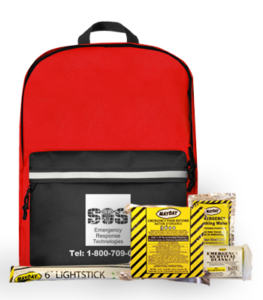 Physical Preparations
Physical Preparations
Emergency Kits
Every classroom should be equipped with an emergency kit containing essential supplies such as water, food, first aid items, flashlights, and more. These kits must be regularly checked and updated. Having accessible emergency kits in Canadian schools is a practical step that emphasizes the importance of immediate response. It also provides a sense of security to students and staff, knowing that essential supplies are available if needed. This simple yet effective measure can be the difference between chaos and control during an emergency and makes emergency preparedness for schools essential.
Safety Measures in School Buildings
The physical integrity of school buildings is an aspect that often gets overlooked. Regular inspections, adherence to safety standards, and timely maintenance can prevent many disasters. From fire safety measures to earthquake-resistant structures, the buildings themselves must be fortified. In Canada, where the weather and environmental conditions vary widely, the importance of these safety measures cannot be overstated. Schools must be more than just centers of education; they must be fortresses of safety, where parents can send their children without a second thought.
Ask us about our PACs Fundraising Emergency Preparedness for Schools
Seeking a fresh, vibrant approach to fundraising? Wave goodbye to the same old routines and warmly welcome our Earthquake Kit fundraising initiative!
This program has gained popularity among PACs, daycares, sports squads, dance academies, and numerous other groups. By joining, you’re not just securing funds for your PAC or club; you’re also equipping families and communities for potential emergencies.
For every kit you secure, there’s an opportunity to earn!
Contact us at: 604.277.5855 now, and together, let’s dive into this spirited fundraising venture!
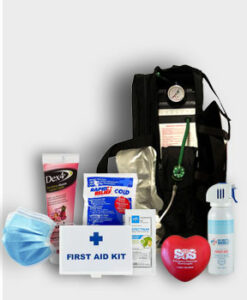 Psychological Preparedness
Psychological Preparedness
Support Systems
Emergencies can leave lasting scars, not just physically but mentally. Counselors, teachers, and peer support systems should be in place to provide psychological support. Recognizing signs of distress, offering counseling, and creating a nurturing environment can help students and staff cope with trauma. In Canadian schools, where inclusivity and mental well-being are emphasized, psychological preparedness is not an afterthought; it’s an essential component of a comprehensive emergency preparedness for schools plan. It’s not just about getting back to school; it’s about getting back to normal.
Stress Management Strategies
Teaching children how to cope with stress is a life skill that goes beyond emergency preparedness. Techniques like mindfulness, relaxation exercises, and open communication can make children more resilient in crises. Schools should integrate these techniques into their regular curriculum, fostering a generation that’s not only educated but emotionally intelligent. In a country like Canada, where the focus is on holistic education, teaching stress management aligns perfectly with the broader educational goals, creating a nurturing environment for both mind and body.
Community Involvement
Parents and Community Cooperation
Community partnerships enhance preparedness efforts, providing additional resources, local knowledge, and support. Schools should actively engage with parents and local communities, building a network that extends beyond the school gates. In Canada, a country known for its community spirit, this approach resonates well. Cooperation with local businesses, non-profit organizations, and community leaders can create a united front against emergencies, where everyone has a role to play, and no one is left behind.Volunteer Programs
Volunteers can be an invaluable asset during emergencies, offering additional support and expertise. Schools should consider creating volunteer programs that invite parents and community members to participate in various safety activities. Training these volunteers and incorporating them into the emergency plans adds another layer of protection. In Canada, where volunteerism is a cherished value, this strategy not only enhances safety but also fosters a sense of community and shared responsibility.Online Safety Considerations
Cybersecurity in Schools
In the digital age, cybersecurity is as essential as physical safety. Educational institutions must protect their networks, data, and digital platforms against cyber threats. This includes implementing firewalls, secure passwords, and regular monitoring. Cybersecurity education for students and staff is equally vital. In Canada, where technology is seamlessly integrated into education, the importance of cybersecurity in schools cannot be overstated. It’s a complex challenge that requires ongoing vigilance and a robust strategy. Learn more about Cybersecurity in Canada
Social Media Education
Educating students about responsible social media use is an essential aspect of modern education. With the proliferation of social media platforms, students must be taught the ethics, risks, and responsibilities associated with online behavior. Canadian schools must take the lead in imparting this education, helping students navigate the complex world of social media responsibly and safely. This effort goes beyond emergency preparedness and enters the realm of lifelong learning, equipping students with the tools they need to thrive in the digital age.
Environmental and Seasonal Considerations
Winter Preparedness
Canadian winters pose unique challenges that require special preparations. From ensuring that school buses are winter-ready to having plans in place for sudden snowstorms, winter preparedness is a distinct aspect of safety in Canadian schools. It also includes educating students about proper winter clothing and other seasonal safety measures. Winter preparedness is not just a seasonal task; it’s a vital aspect of the yearly planning that ensures the continuous and safe operation of schools across the nation.Environmental Concerns
Environmental sustainability should be considered in all aspects of emergency preparedness. From using eco-friendly materials in emergency kits to promoting energy-efficient building designs, schools must align their safety plans with environmental goals. In Canada, where environmental stewardship is a national priority, incorporating green practices into emergency preparedness reflects a commitment to a sustainable future. It’s not just about responding to today’s crises; it’s about safeguarding tomorrow’s world.Monitoring and Evaluation
Regular Drills
Practicing emergency preparedness for schools procedures through regular drills ensures that everyone knows their role during a crisis. These drills must encompass various scenarios, from evacuations to lockdowns, to provide comprehensive readiness. In Canadian schools, regular drills are not just a regulatory requirement; they are a reflection of a commitment to safety and well-being. Practice makes perfect, and in the context of emergency preparedness, perfection can mean the difference between life and death.
Continuous Improvement
An effective emergency preparedness for schools plan is never stagnant; it evolves with time, reflecting new risks, technologies, and lessons learned. Regular evaluations, feedback from students, staff, parents, and community members, and adapting the plans as needed are vital. Canadian schools should embrace a culture of continuous improvement, recognizing that an emergency plan is a living document, always ready to meet new challenges. It’s about building a dynamic, responsive system that grows with our children, ensuring their safety at every step.

